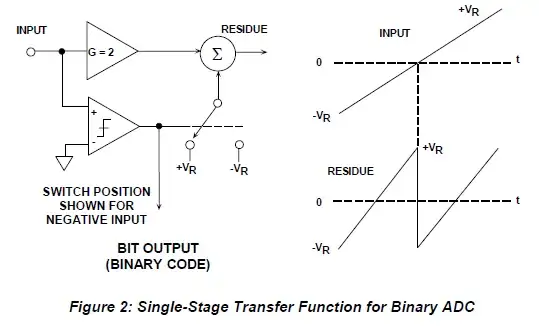This may sound very naive and impractical question, and most likely the answer is negative, but still: is there any more or less simple (simpler than ADC/DAC) analog component or circuit, which makes modulo operation on the value of voltage, given Vref?
For example, if Vref = 1V and input V = 11.56V, then the device will produce 0.56V. Similarly, with Vref=2V, the same input will give 1.56V. Of course, Vinput must be from some sensible range.
If such a thing exists, then it can be used to make a new(?) type of ADC.
UPDATE: I am aware, that modulo function (applied to time) is just a sawtooth http://en.wikipedia.org/wiki/Sawtooth_wave , so there may be some solution involving linearly turning voltage to time period, then reading the sawtooth value.
